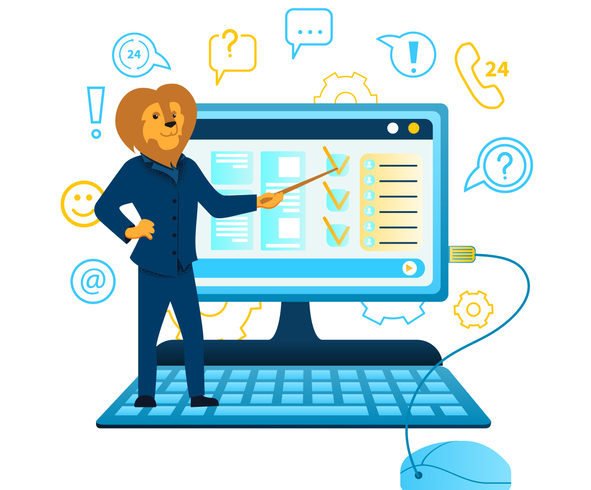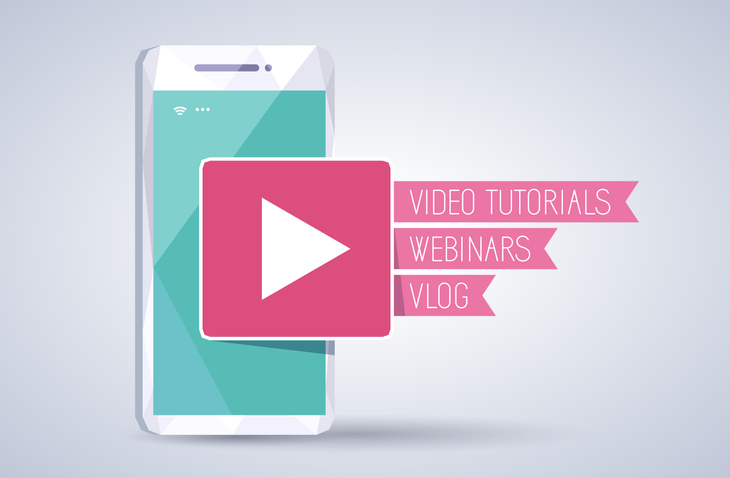What Is the Best OVP to Stream Live Paid Educational Videos?
Video use in education can be “highly effective”—and highly lucrative for producers. With revenues from OTT video expected to surpass $20 billion this year (2019), there’s never been a better time to join the industry. Given that trend, this article will present information about the best way to monetize video for education. In particular, we’ll cover how to do so through the use of an Online Video Platform (OVP).
Setting aside the meteoric rise of OTT (Over The Top) video, there are many other reasons to invest in educational content. Globally, the number of students enrolled in higher education has more than doubled since 2000. That figure doesn’t include primary and secondary education, which accounts for another 1.3 billion students globally.
Most of these students are “digital natives” who’ve grown up learning from YouTube videos. They’re comfortable with multimedia education. In fact, they expect it! Here at Dacast, we too have seen a steady rise in the use of video for education since 2008.
Now, let’s start with a review of some of the benefits of video monetization in educational contexts. From there, we’ll take a look at ideal ways to generate revenue from your educational video content. We’ll also cover how to set up monetization with your video streaming OVP.
Benefits of monetizing video for education
First, let’s consider some of the benefits of monetization. The major benefit, of course, is making money. The continued profitability and growth of online video demonstrates the robustness of this business model.


As individuals can continue to purchase on-demand videos after they’ve streamed live, video monetization is the gift that keeps on giving. In short, educational videos can continue to generate revenue for a long time.
Educational video monetization also makes life easier for educators or instructors. It reduces the amount of time they need to spend in the classroom conducting lectures. That frees up time for questions and dialogue via the “flipped classroom” model.
For students, video learning makes content available at any time and any location. Learning can occur at their own pace. There’s also evidence that paid content encourages buyers to value the content contained within more highly, which can lead to more engagement with the material.
Best ways to monetize video
Now, let’s dive into the nitty-gritty of video monetization, including how to do so with an OVP like Dacast.
First, we’ll address the issue of the best practices to monetize video. There are three main models used to sell online video, all of which will work for either live streams or on-demand video.
Transactional monetization / Pay-Per-View / TVOD
The names are a dead giveaway here. Transactional video monetization refers to a process by which a viewer pays a single fee for each video (or collection/playlist of videos) they watch. The transactional model, often via PPV (pay-per-view) streaming, is easy to understand and use. It’s also a great option for students seeking digestible chunks of learning, or individual courses.


Subscriptions monetization / SVOD
Subscriptions, as the name implies, involve paying a regular (often monthly) fee in exchange for access to a library of content. Netflix is the most popular example of this. In an educational context, subscriptions may offer a better deal for students willing to cram and study a variety of courses at the same time. It may also provide a more reliable income for producers since future income can be predicted to some degree.
Advertising monetization / AVOD
The final common method of monetization is via advertising. This can take the place of in-video ads or ads on the web pages that host the videos. Advertising depends on a large number of people watching your content. In recent years, we’ve also seen the rise of ad-blockers cutting down on advertising revenue.
Here at Dacast, we’ve found advertising to be an inferior monetization method. However, we do still support in-video advertising via VAST or other common API-based methods.
Selecting an OVP to monetize your educational videos
So you know that you want monetization—great! Let’s talk about your online video education platform selection—but first, let’s define the term.
An online video platform (often abbreviated to OVP) is a tool for managing your online video. First and foremost, an OVP helps you store and deliver video. That means it provides the storage, servers, and infrastructure for live streaming or video-on-demand. Other OVP features that may be especially important for educational users include white-label, integrated paywalls, and video APIs.
We’ll discuss those in a bit more detail, but first, let’s look at how to set up video monetization via an OVP.
Setting up video monetization with your OVP
Getting video monetization up and running is relatively simple. For the examples below, we’ll cover this setup for when you’re using Dacast’s streaming solutions.


First, it matters whether you’re monetizing pre-recorded videos or live streams that will occur in the future. For pre-recorded content (commonly called Video-On-Demand, or VOD) you’ll need to upload your files to your online video platform (in this case, Dacast). If you plan to broadcast live, however, you’ll have nothing to upload yet. That said, you can create your “live channel” in advance.
Next, you want to enable monetization in the settings for your video or live channel. When you do so, a series of input boxes and drop-down menus will allow you to select your preferred monetization method and price. If you’re setting up a subscription, you’ll also need to select all the other content that will be accessible for subscribers.
A dedicated, professional OVP like Dacast makes this process easy. It should only take you a few minutes to set up a pay-per-view live stream and begin collecting income.
White-label service & custom branding
Now, let’s review a few other features that are useful in an online video platform, especially for educational videos. First up is white-label service. “White-label” means that videos curated via this OVP will not include the logo of the OVP. In fact, it’ll be easy for you to insert your own logo.
This is in contrast to B2C (business-to-consumer) video platforms like YouTube, which include the YouTube logo in every video player, embed, and so on.
Most B2B (business-to-business) OVPs, including Dacast, enable some form of white-label service. However, be aware that many only provide white-label service to higher-tier accounts. Here at Dacast, even our entry-level accounts are white-label. With our OVP, you can set custom branding on all your videos at any account level.
Integrated paywall with clear instructions


The next great feature to look for in an OVP is a simple, integrated paywall. An integrated paywall means that video purchases occur in the video window itself. Customers enter their payment information, which is safely encrypted and transmitted to the bank. Payments are approved, and then access to the video is opened up.
An integrated paywall offers a number of advantages. First, it enhances security by reducing the chances that someone will embed a freely-accessible video into other domains. (Note: Dacast also includes other security features to prevent unauthorized embedding of videos).
Second, an integrated paywall makes the monetization process very seamless. Rather than purchasing access on a separate page and then navigating to their purchased video content, an integrated paywall removes the navigation step for viewers. This creates a more seamless and transparent process for viewers: enter payment info, then watch the video.
APIs for easy integration and customization
The final key feature that we’ll cover in this post is a video API. API stands for Application Programming Interface. An API functions as a standardized language that allows you to custom-design applications and services that interact with your OVP.
For example, an API allows you to integrate your OVP with an existing Online Learning Platform, such as Blackboard or Canvas. It can assist with other technical tasks, such as:
- Creating a dedicated video portal for your educational videos
- Designing a mobile app to allow users to access your content
- Creating a video-recording solution for professors that automatically uploads or streams content to your account
- Integrating advertising into your videos, and
- Customizing your video player.
Conclusion


As we’ve covered in this article, the education sector is uniquely poised to capitalize on the growing video content industry. And the appetite for great educational video will continue to grow, which makes monetizing educational videos a good strategy to implement–today!
We hope the features we’ve reviewed in this article will help you to choose the right streaming solutions for you. Remember–look for a variety of monetization options, an integrated paywall, white-label service, and an integrated API. A service that ticks all these boxes will likely work perfectly for your needs!
Ultimately, we hope that this information about monetization with an OVP inspires you to get your own educational videos up and running. Any questions, comments, or ideas? Let us know below. We love to hear from our readers, and we will get back to you. For regular live streaming tips and exclusive offers, we also invite you to join our LinkedIn group.
If you’re not yet streaming with us, we’d love for you to give our platform a try! If you’re interested, you can simply click the button below to sign up for our 14-day free trial (no credit card required). That way, you can test out all our platform’s features for yourself!
Thanks for reading and, as always, good luck with your live streams!
By Max Wilbert.


